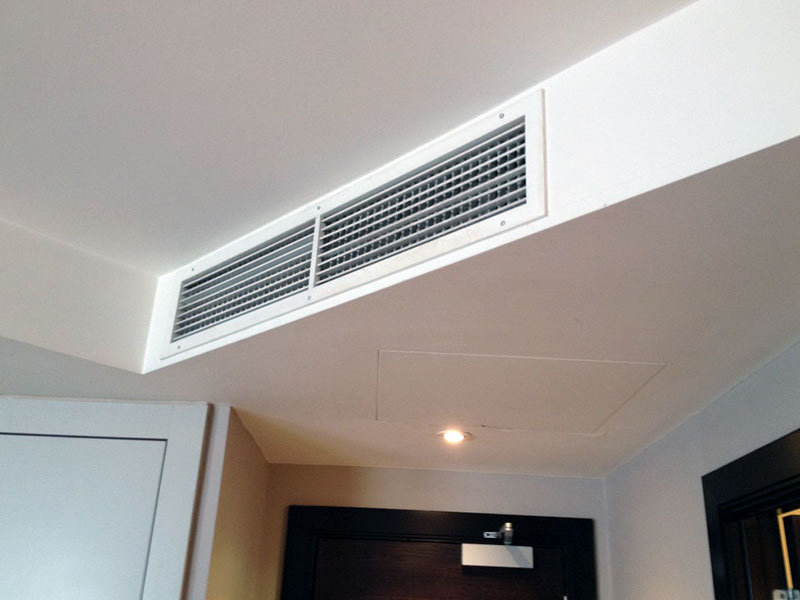Concealed ducted split system
- Home
- Solutions
- MEP Solutions
- Concealed ducted split system

The concealed ducted split system is an invisible HVAC option, where the indoor air handler is hidden in the ceiling or the attic with visible small vents in the assigned area.
The system ducts are invisible, it distributes air through the ceiling or wall vents.
Concealed ducted split system parts
The system comes with 4 parts:
Indoor Unit
This unit consists of an indoor power supply, a cable to connect indoor to the outdoor unit, diffusers, flexible ducts, return air grills to filter air, motorized dampers and a wired tether controller to control the indoor unit.
Indoor Unit Accessories
This unit accessories includes a hanger to hold the indoor unit in place, a nut with washer to fasten the hanger brackets to the unit, Pipe insulation to insulate the gas and liquid pipes, flare nut and a fastener.
Outdoor Unit
This unit consists of a service cover to cover up the lines connected to the unit, front panel, gas pipe, liquid pipe, drain hose and outdoor power supply.
Outdoor Unit Accessories
This unit accessories includes a drain plug and a drainage connector.

Concealed ducted split benefits
- Ventilation grids can be placed around the room; for balanced air conditioning. Out-of-sight HVAC system; some system designs come with a range of grids and diffusers and ducts that are placed discreetly, not to affect room aesthetics.
- Can supply the area with fresh air easily and mix it with the air-conditioned.
- One indoor unit can be used for air conditioning in several rooms. For more efficiency, a zoning option is available to allow controlling room conditioning at any time.
- Concealed ducted split is the quietest system compared to its counterparts; since the indoor handler is located above the ceiling away from users.
- The system comes with an automatic mode to allow switching between heating and cooling modes; to maintain consistent temperatures throughout the air-conditioned area.
- Convenient control through a wall-mounted thermostat.
- Easy to install air vents, which can be moved easily in case of different air distribution requirements.
- Additional accessories can be installed to the wall-mounted controller or in the intake air grille; to help increase comfort.
- Different types of controllers are available such as a wall-mounted controller, a mobile app or remote control.
- Some systems could have adjustable external static pressure, anti-cold air function, refrigerant leakage detector or a drain pump with float switch.
- Concealed ducts can evenly distribute conditioned air, even in large areas. It uses short-run ducts to move air through different outlets.
- Can be used for air conditioning spaces that are difficult to air-condition with system counterparts such as sunrooms and basements.
Alternatives in the market
- Direct Expansion (DX)
- Split-System air conditioners
- Chilled water
- Variable refrigerant flow (VRF)
- Variable refrigerant volume (VRV)
Installing a concealed ducted split
Installing a concealed duct split system has to be in a fair insulated space, otherwise, a box is built around the unit to cover its exterior with insulation; to avoid condensation building up.
In case of using existing ducts, transition ducts are being installed to distribute the conditioned air to different outlet grilles.
The ceiling has to withstand twice the weight of the unit installed, with enough space around it to facilitate future maintenance and to ensure that the air inlet and outlet will not be blocked.
In case of installing the system against the wall surface, ducting may not be important.

Energy Efficiency
The new system is more energy-efficient than older ones, it uses a more energy-efficient technology. This can help reduce electricity bills significantly in the long term.
Other factors have to be put into consideration when calculating power consumption:
- Insulation, which can reduce the overall running cost
- Total area
- Weather
- Time running the unit
- Preferred temperature, as the unit may have to work harder to fulfil your needs
Maintenance
The system has to be maintained every 12 months by a qualified technician; to keep operating efficiently.
